The field of forensic science applies varied disciplines – including biology, chemistry, anthropology, and psychology – to investigate crimes related to criminal and/or civil law. A forensic scientist preserves and analyzes evidence using techniques from these scientific disciplines, while maintaining legally mandated standards so that the evidence is allowable in court.
Criminalistics
Criminalistics uses scientific methods and principles during the criminal investigation process to analyze physical evidence – such as chemical traces, ballistic evidence, controlled substances, genetic material, and marks on tools employed in a crime. PRISM students use the latest technologies to develop more sensitive methods for the detection of illicit substances and to analyze evidence found during criminal investigations.
Selin Ates
Extraction of DNA from Historical Art Piece for Species Determination (Dr. Nathan Lents)
 I’ve always been interested in science, but I never imagined pursuing it as a career. My passion for forensic science grew in high school when I realized I could combine my interests in science and crime-solving. Joining PRISM allowed me to apply my knowledge and put it to the test. Exploring the unknown and experimenting in the lab has been exciting and eye-opening, asI never know what my experiments will reveal. Drawing on my PRISM research experience, I plan to continue to graduate school and earn a master’s in forensic science.
I’ve always been interested in science, but I never imagined pursuing it as a career. My passion for forensic science grew in high school when I realized I could combine my interests in science and crime-solving. Joining PRISM allowed me to apply my knowledge and put it to the test. Exploring the unknown and experimenting in the lab has been exciting and eye-opening, asI never know what my experiments will reveal. Drawing on my PRISM research experience, I plan to continue to graduate school and earn a master’s in forensic science.
The Museum of Modern Art has commissioned us to identify the animal species whose fur was used by artist Meret Oppenheim in her sculpture titled “Le Déjeuner en fourrure.” We are currently experimenting with several methods to determine the optimal procedure to extract DNA from the highly degraded sample.
In-deria Borrows
Unlocking the Past: Extracting and Sequencing DNA from Aged Museum Pelts for Species Identification and Confirmation (Dr. Nathan Lents)
 My diagnosis with Polycystic Ovary Syndrome and the lack of effective treatments inspired me to pursue science, particularly in serving underserved communities and women’s health. I’ve always been passionate about medicine and science, driven by a desire to help others and my own experiences with illnesses. I aim to pursue a career in pharmaceutics or biomedical engineering. My research at John Jay has shown me that science offers endless paths to explore, and determination is key to success.
My diagnosis with Polycystic Ovary Syndrome and the lack of effective treatments inspired me to pursue science, particularly in serving underserved communities and women’s health. I’ve always been passionate about medicine and science, driven by a desire to help others and my own experiences with illnesses. I aim to pursue a career in pharmaceutics or biomedical engineering. My research at John Jay has shown me that science offers endless paths to explore, and determination is key to success.
In our study, we focus on extracting valuable DNA from aged pelts collected at the Museum of Natural History to assist in species confirmation or identification. By utilizing advanced DNA extraction and sequencing techniques, we will demonstrate how historical genetic material can reveal species information from decades-old samples, aiding both conservation and historical research efforts.
Steven Bermejo
The Effectiveness and Impact Dynamics of Less-Lethal Bean Bag Ammunition (Dr. Peter Diaczuk)
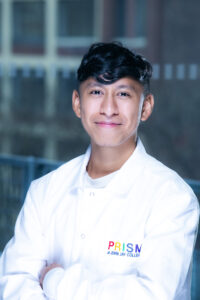 I’ve always been curious about the world around me and fascinated by problem-solving from a young age. In high school, I took chemistry and forensic science classes, quickly discovering how science and the criminal justice system work together to solve crimes. That’s when I realized my passion for forensic science. Joining PRISM has given me the opportunity to apply classroom knowledge to my research project. It has also strengthened my confidence in my technical skills and ability to work independently. I’m grateful for the support from my mentor and fellow undergraduate researchers.
I’ve always been curious about the world around me and fascinated by problem-solving from a young age. In high school, I took chemistry and forensic science classes, quickly discovering how science and the criminal justice system work together to solve crimes. That’s when I realized my passion for forensic science. Joining PRISM has given me the opportunity to apply classroom knowledge to my research project. It has also strengthened my confidence in my technical skills and ability to work independently. I’m grateful for the support from my mentor and fellow undergraduate researchers.
My project explores the impact, effectiveness, and potential risks of bean bag ammunition, a type of less-lethal ammunition that has become increasingly popular in law enforcement. Less-lethal ammunition is used to control situations without resorting to deadly force, ultimately ensuring the safety of many individuals. Further research will be conducted to determine whether bean bag ammunition poses any risks when used.
Grace B. Castillo
Development of a Machine-Learning Algorithm to Evaluate Photomicrographs of Animal Hair Shaft and Scale Cast and Identify their Provenance (Dr. Jack Hietpas)
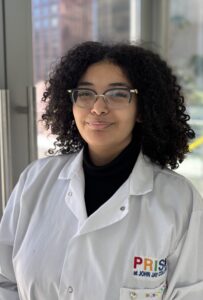 Science, with all its niche formalities, has always held a special place in my heart since I was young. Performing procedures and seeing scientific concepts emerge like a picture book is surreal, making the laboratory my second home. Research under PRISM has opened a world of possible career tracks and reignited my interest in science. Moving forward, I hope to work full-time in a forensic toxicology lab and aim to obtain a PhD, honing my laboratory skills along the way.
Science, with all its niche formalities, has always held a special place in my heart since I was young. Performing procedures and seeing scientific concepts emerge like a picture book is surreal, making the laboratory my second home. Research under PRISM has opened a world of possible career tracks and reignited my interest in science. Moving forward, I hope to work full-time in a forensic toxicology lab and aim to obtain a PhD, honing my laboratory skills along the way.
The inner structure of animal hair varies from species to species. In my research, we capture photomicrographs of hair shafts and scale casts from over 20 diverse species. These images are then placed into Matlab, a machine-learning algorithm, to create a database that aids in the identification of unknown animal hairs.
Laila Mansour
The Battle of the DNA Bots: Evaluating Automated DNA Extraction for Forensic Casework (Dr. Mechthild Prinz)

Growing up, trips to the Liberty Science Center with my dad and science classes in elementary school helped me realize I wanted to pursue a career in science. Watching NCIS’s Abby Sciuto apply science to the justice system inspired me to become a DNA analyst. My mentor’s guidance and expertise have shown me what research in forensic science can look like and provided hands-on experience with techniques and instruments used in forensic labs.
My research compares the DNA yields from two automated DNA extraction instruments, the QIAGEN QiaCube and QIAGEN EZ1. This work aims to identify the method that yields optimal DNA recovery from biological evidence, which is essential for use in criminal investigations.
Olsmaël Mérisier
The Effects of Over-Lubrication of a Gun Barrel on Discharged Cases and Bullets (Dr. Peter Diaczuk)
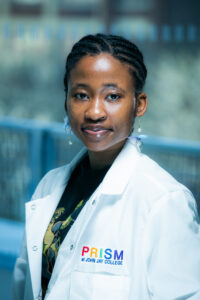 I love science! Studying biology and chemistry and conducting research at John Jay has allowed me to explore why things operate the way they do. With my forensic science degree, I hope to earn my commission in the Air Force and work in the Office of Special Investigations. My goal is to become a forensics expert for the Air Force, working in crime science across multiple bases and serving as an expert witness in court. When I separate from the Air Force, I plan to use my experience and military training to work in the civilian sector, hopefully at a Forensics Lab with the FBI.
I love science! Studying biology and chemistry and conducting research at John Jay has allowed me to explore why things operate the way they do. With my forensic science degree, I hope to earn my commission in the Air Force and work in the Office of Special Investigations. My goal is to become a forensics expert for the Air Force, working in crime science across multiple bases and serving as an expert witness in court. When I separate from the Air Force, I plan to use my experience and military training to work in the civilian sector, hopefully at a Forensics Lab with the FBI.
My project explores the effect of over-lubricating a gun barrel on the bullets fired. By examining bullets and cartridge cases shot from the same firearm with varying levels of lubrication, we can determine if there is an effect on the marks formed on a discharged bullet as it passes through the gun’s barrel.
Diana Muñoz Ortiz
Determination of Gunshot Residue on Fabric Using Chemical and Photographic Testing (Dr. Peter Diaczuk)
 I’ve always been interested in understanding how the world works. As I grew up, I began to understand science at a deeper level and decided to pursue a career in it. When I first took a forensic science course in high school, I didn’t know it would change my life. I became passionate about forensic science and decided to study it at John Jay. PRISM has allowed me to work with amazing people who have helped me develop new experiences and skills as a researcher. My goal is to apply these skills to continue working in research at a government agency or in a laboratory.
I’ve always been interested in understanding how the world works. As I grew up, I began to understand science at a deeper level and decided to pursue a career in it. When I first took a forensic science course in high school, I didn’t know it would change my life. I became passionate about forensic science and decided to study it at John Jay. PRISM has allowed me to work with amazing people who have helped me develop new experiences and skills as a researcher. My goal is to apply these skills to continue working in research at a government agency or in a laboratory.
I am researching the pattern of gunshot residue around the entry hole of fabric to estimate the distance a firearm was fired. we will use chemical and photographic testing to analyze the concentration of nitrites around the entry hole with a software imaging program called ImageJ.
Sherley Tejada
Enhancing Touch DNA Visualization Using Diamond Dye and Triton X (Dr. Mechthild Prinz)
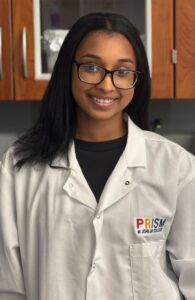 Fueled by a passion for challenges and uncovering answers that impact the justice system, my journey in science has reinforced my commitment to forensic analysis. Aspiring to become a forensic analyst for law enforcement after earning a master’s in forensic science, PRISM has provided me with valuable skills and insights to navigate a real-world scientific career.
Fueled by a passion for challenges and uncovering answers that impact the justice system, my journey in science has reinforced my commitment to forensic analysis. Aspiring to become a forensic analyst for law enforcement after earning a master’s in forensic science, PRISM has provided me with valuable skills and insights to navigate a real-world scientific career.
This project evaluates techniques used to visualize touch DNA, the small amounts of genetic material left behind by a person’s touch, to improve biological evidence testing. By optimizing existing staining methods that use Diamond Dye and Triton X, we aim to increase DNA trace detection, addressing a forensic challenge in how evidence is visualized and collected.
Forensic Entomology
Entomology is a branch of biology that studies insects. Forensic scientists often use the identification of insects in or around a cadaver or other remains to determine the time of death or whether a cadaver was moved after death. Our students are studying how environmental and ecological factors found at a crime scene affect the determination of a victim’s time of death.
Samantha Davis
Investigation Into The Microbiome of Blow Fly Eggs Using MicroSEQ TM ID (Dr. Jennifer Rosati)
 Being a STEM student has brought immense joy into my life. Conducting research in the sciences allows me to explore a wide variety of fields with the potential to make significant impacts on people’s lives, and that experience is irreplaceable. After changing my major in my freshman year from forensic psychology to forensic science and deciding to pursue a PhD, I have never felt more on the right path. I am incredibly thankful for my family, friends, and mentors who have supported me in pursuing my passion for science.
Being a STEM student has brought immense joy into my life. Conducting research in the sciences allows me to explore a wide variety of fields with the potential to make significant impacts on people’s lives, and that experience is irreplaceable. After changing my major in my freshman year from forensic psychology to forensic science and deciding to pursue a PhD, I have never felt more on the right path. I am incredibly thankful for my family, friends, and mentors who have supported me in pursuing my passion for science.
In my project, we investigate the microbiomes that exist on the eggs of different species of blowflies. This research is being done to increase our understanding of why blowflies colonize on a corpse, whether it be because of chemical signals, microbial signals, or both.
Alex Win
Detection of Gunpowder Residues in Blowfly Larvae: Investigating the Use of Blow flies as Post-Mortem Indicators of Firearm Use in Homicide Investigations (Dr. Jennifer Rosati & Dr. Peter Diaczuk)
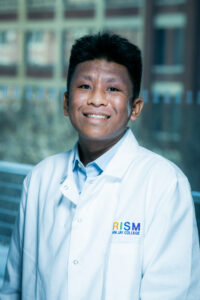 With time, I’ve come to realize that scientists are superheroes. It is so cool that we have gotten people to fly in the air like Superman and to scale tall heights like Spider-Man; but it was mind blowing when I found out that it was research that allowed us to do these things by designing jet packs and gloves with gripping materials inspired by gecko’s skin. But I’ve found the real superpower is the way we use research to help people – like with vaccines and hybrid vehicles. Ever since, I’ve made it my goal to learn this power too and use it for the betterment of those around me.
With time, I’ve come to realize that scientists are superheroes. It is so cool that we have gotten people to fly in the air like Superman and to scale tall heights like Spider-Man; but it was mind blowing when I found out that it was research that allowed us to do these things by designing jet packs and gloves with gripping materials inspired by gecko’s skin. But I’ve found the real superpower is the way we use research to help people – like with vaccines and hybrid vehicles. Ever since, I’ve made it my goal to learn this power too and use it for the betterment of those around me.
Just like we can now tell if the cow you’re eating was fed grass or corn, forensic entomologists can tell if fly larvae fed on a cadaver who died from a meth overdose. We found out that certain substances present in the deceased are detectable in forensically important fly larvae, and now we’d like to know if gunpowder is one of them.
Maria Josefina Zamora
Resource Quality and its Effects on the Developmental Stages in Dermestes maculatus: Implications for Post-Mortem Interval Estimations (Dr. Jennifer Rosati)

Science has always been a way for me to bridge my curiosity with real-world impact, and my research experiences at John Jay with PRISM have solidified my passion for forensic science. Through meticulous analysis and problem-solving, I have developed strong analytical and communication skills, thriving in this academic setting. The hands-on lab work, mentorship, and collaboration at John Jay have strengthened my confidence and reinforced my commitment to pursuing a career in forensic science.
My research focuses on using Dermestes maculatus beetle development to estimate post-mortem intervals (PMI) in forensic investigations. In advanced decomposition stages, traditional methods become less reliable, making these beetles crucial for accurate PMI estimation.



